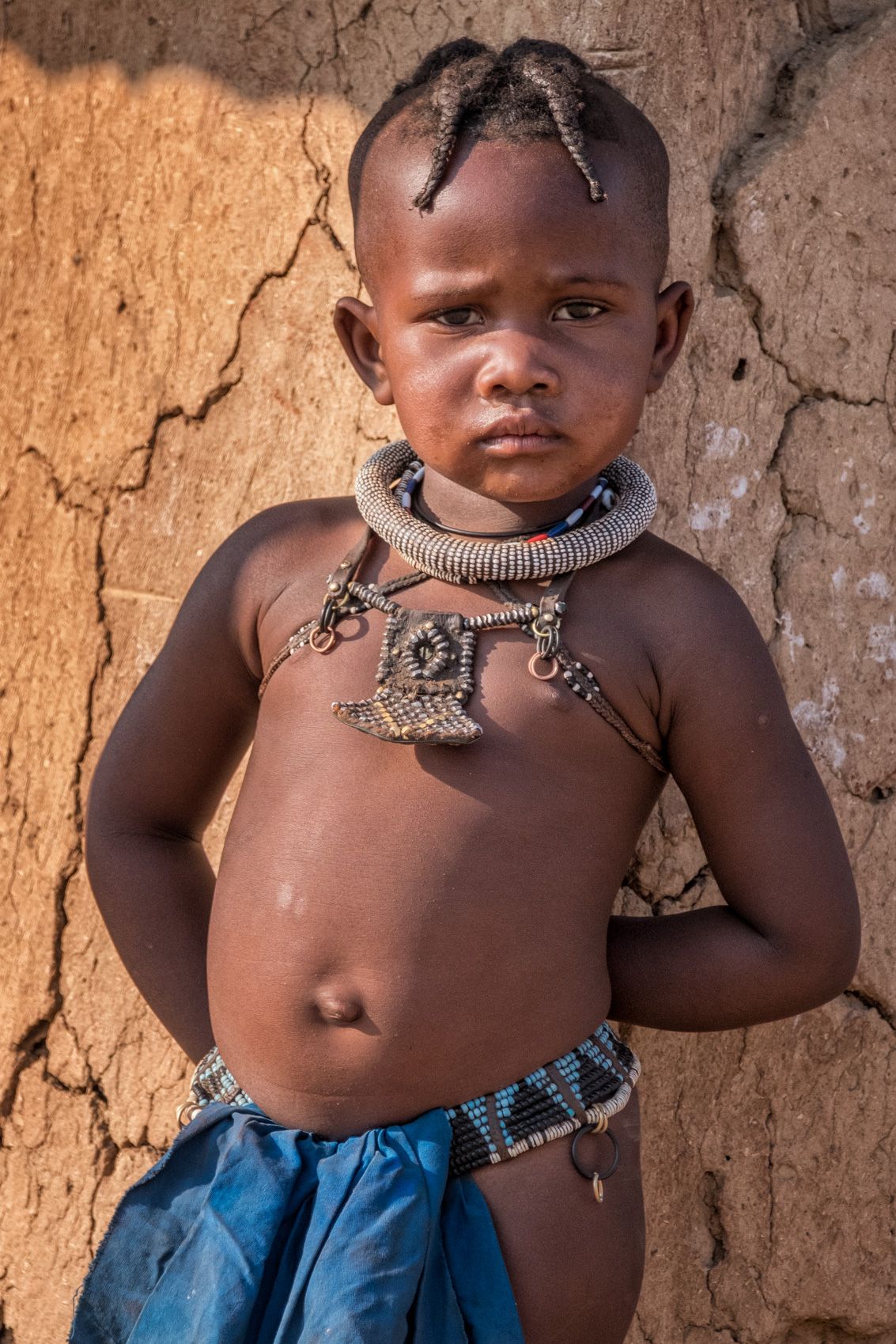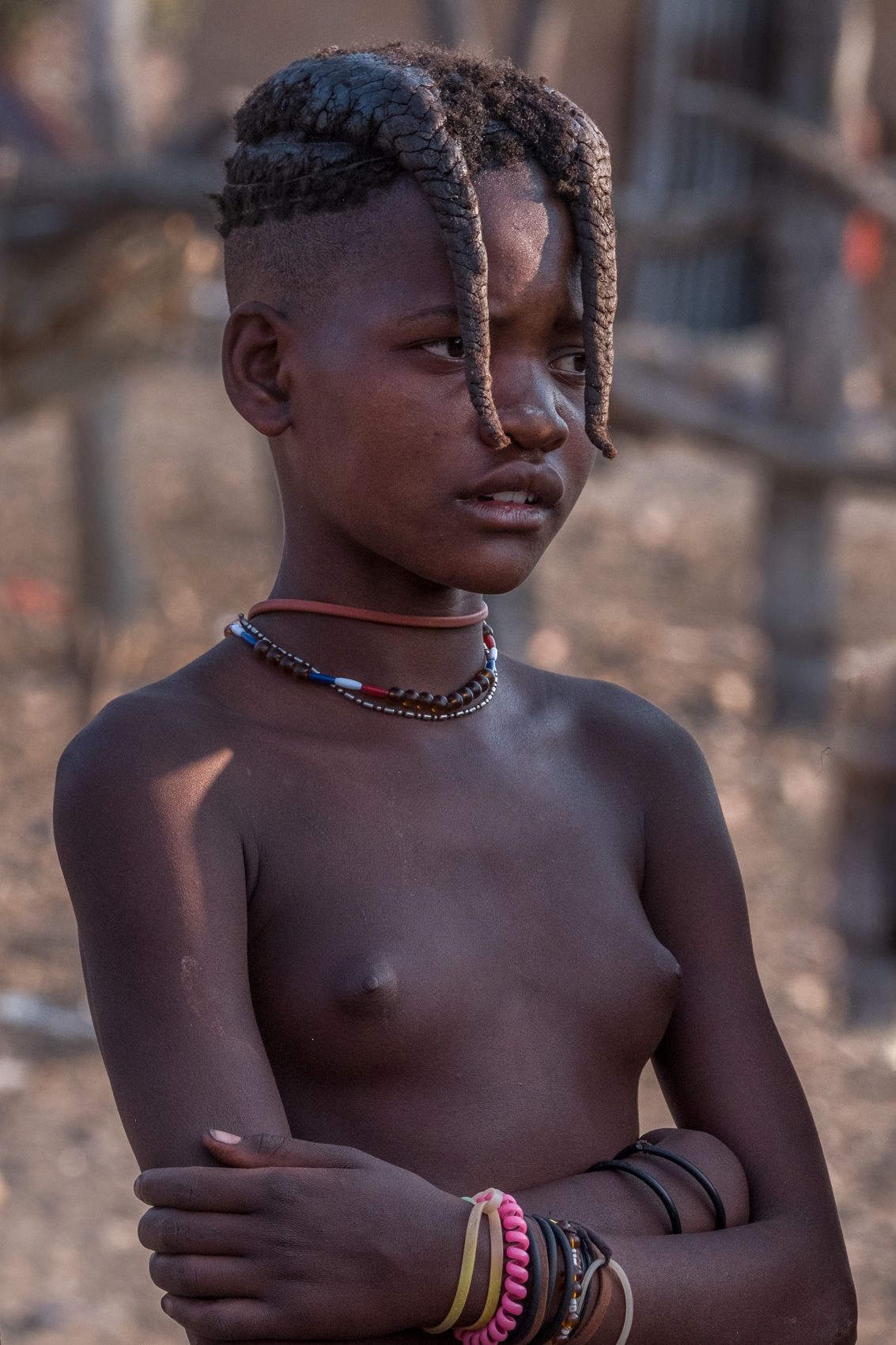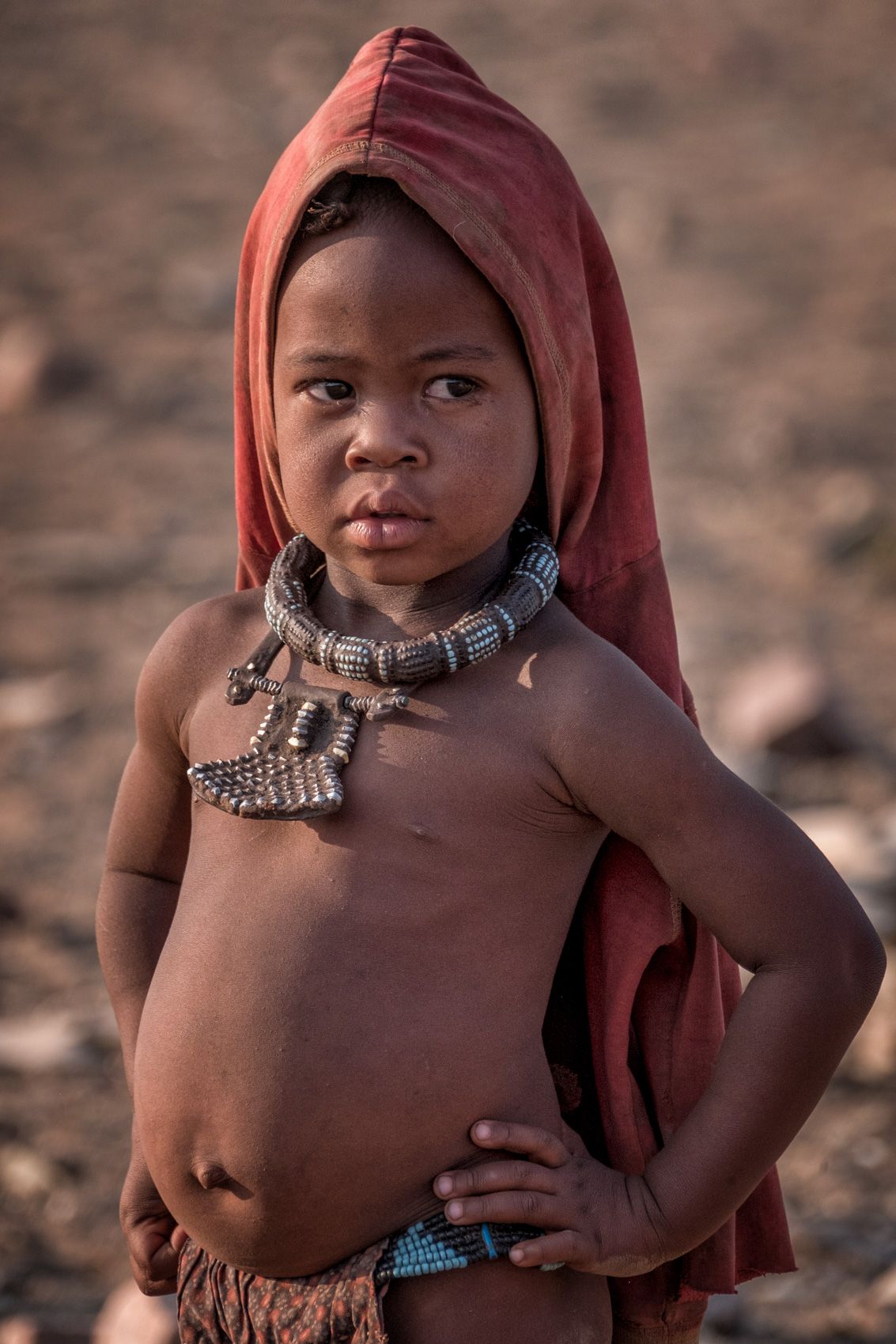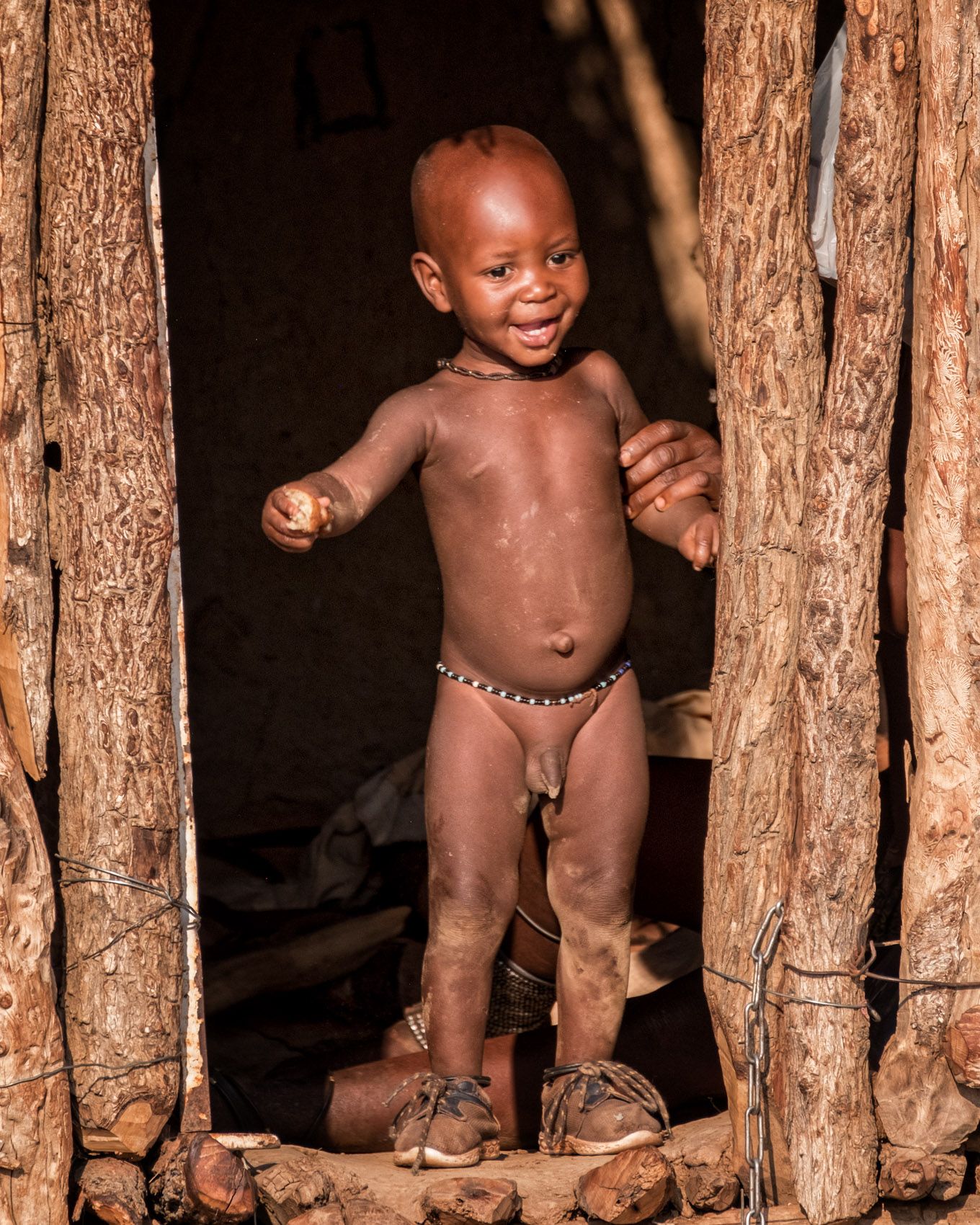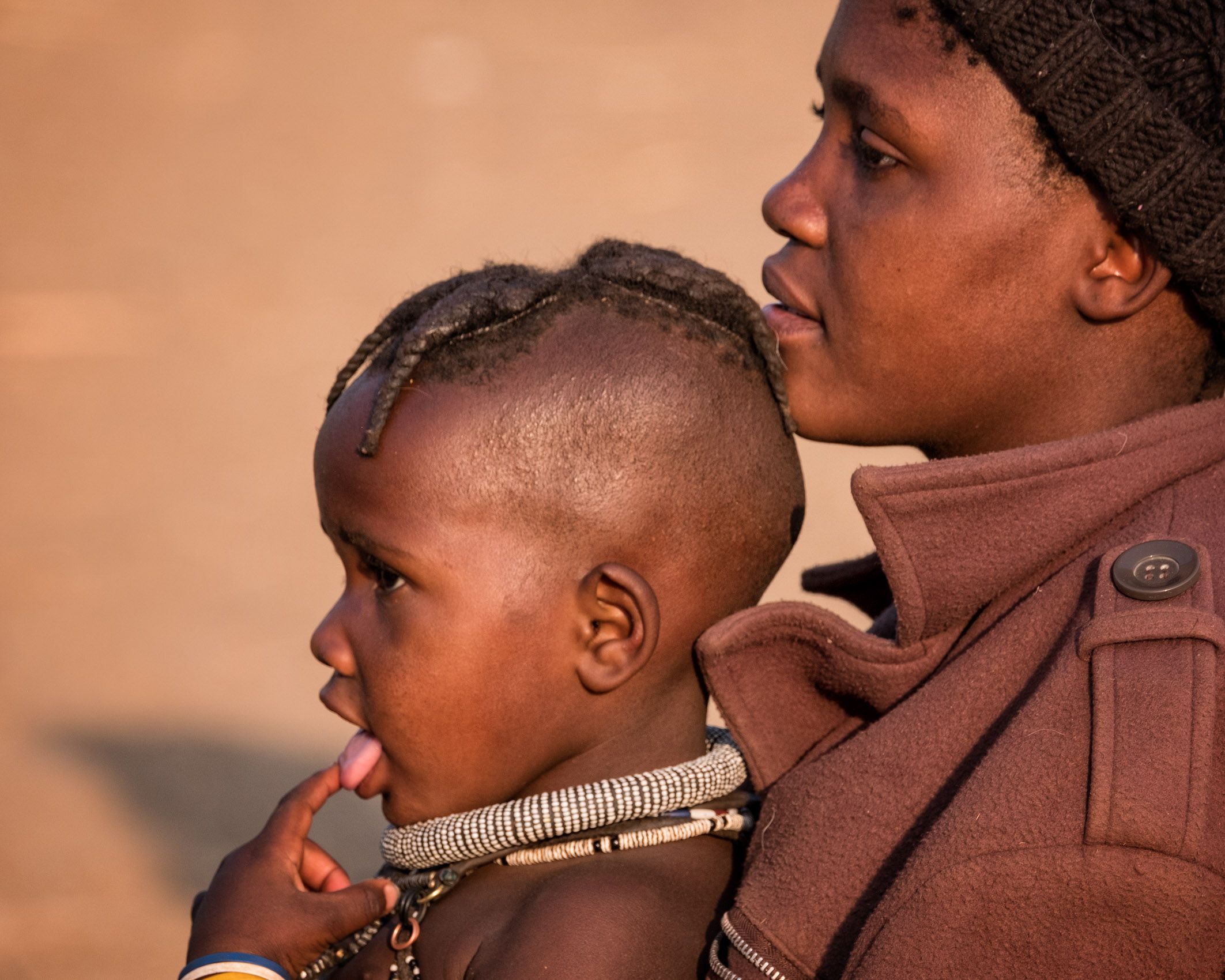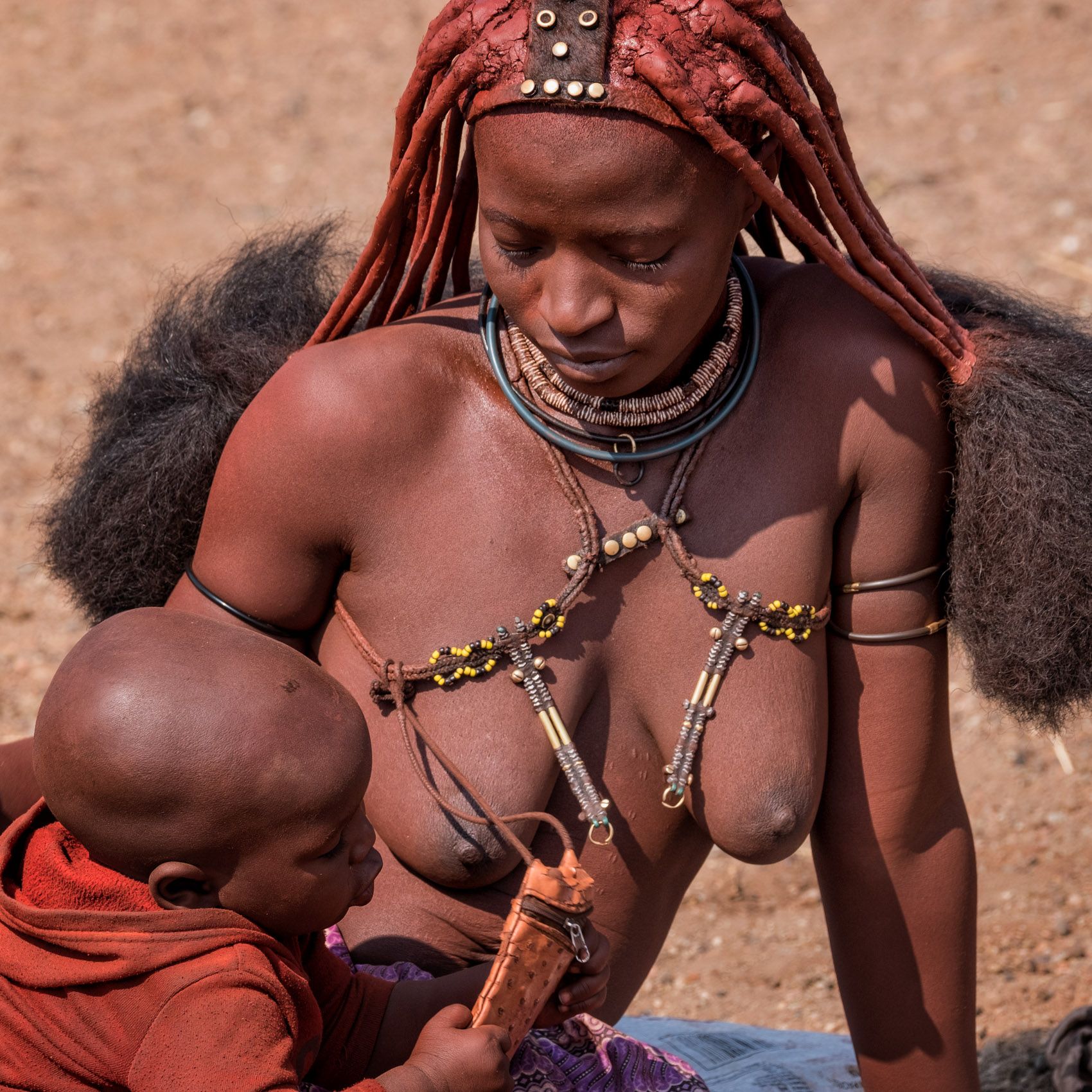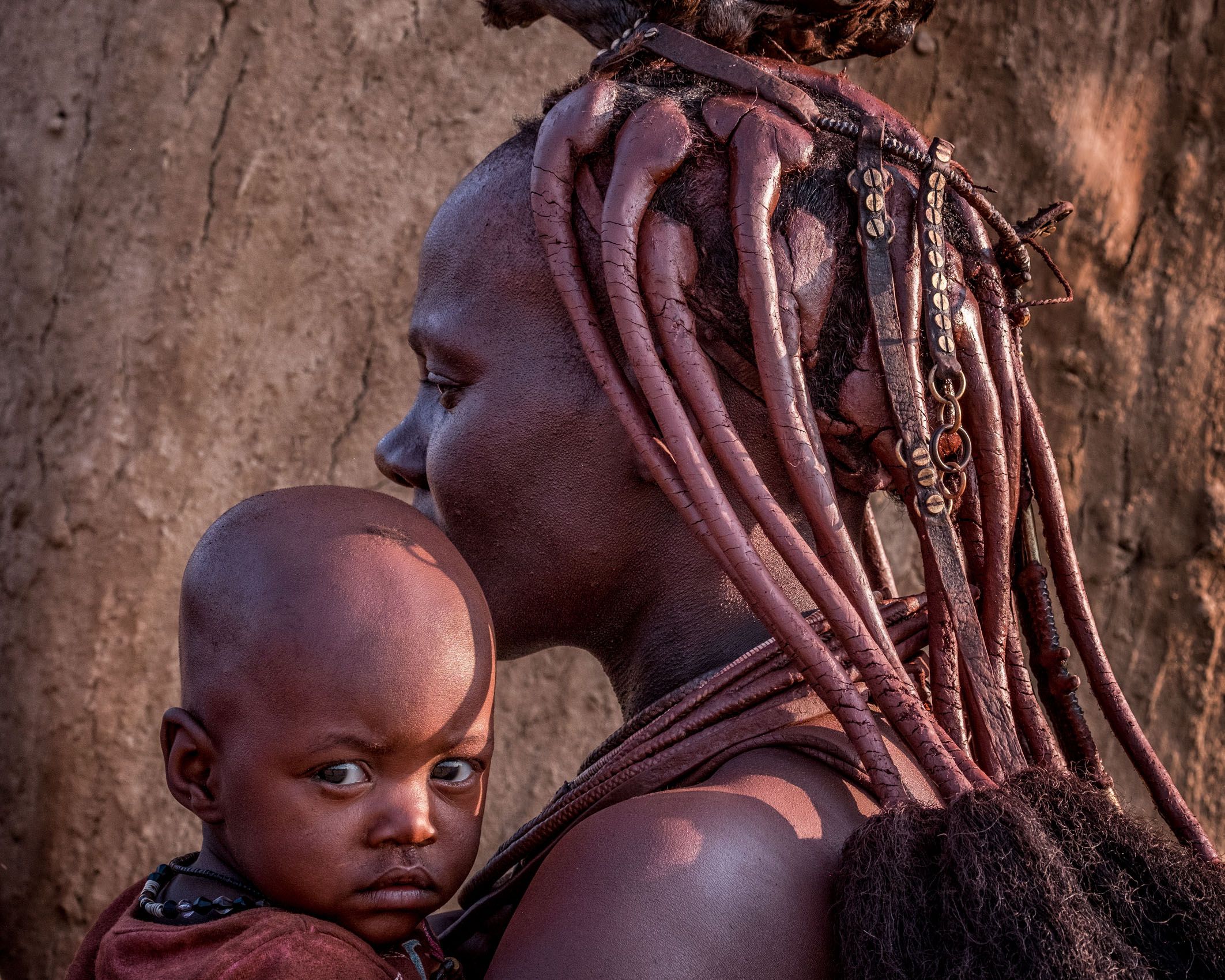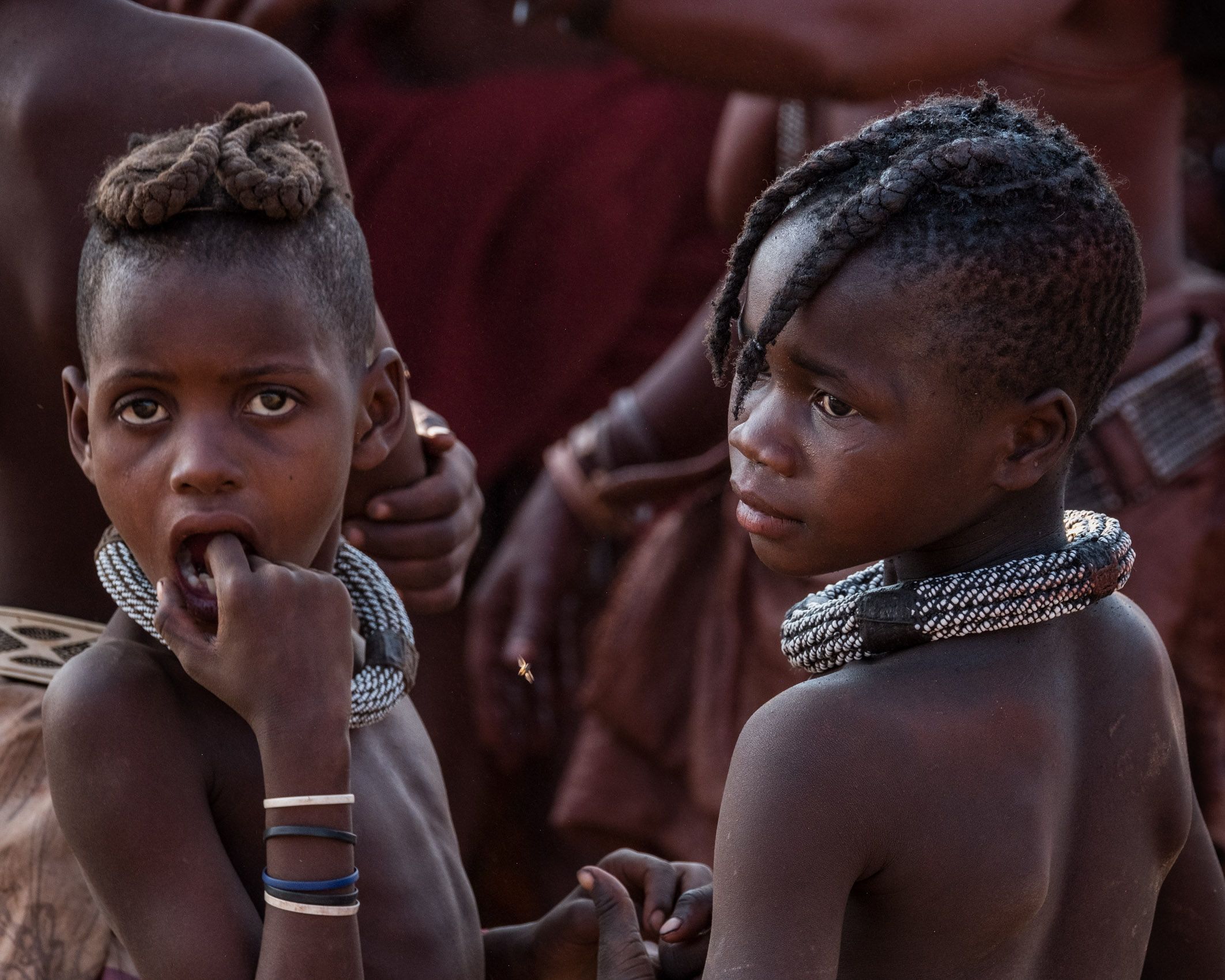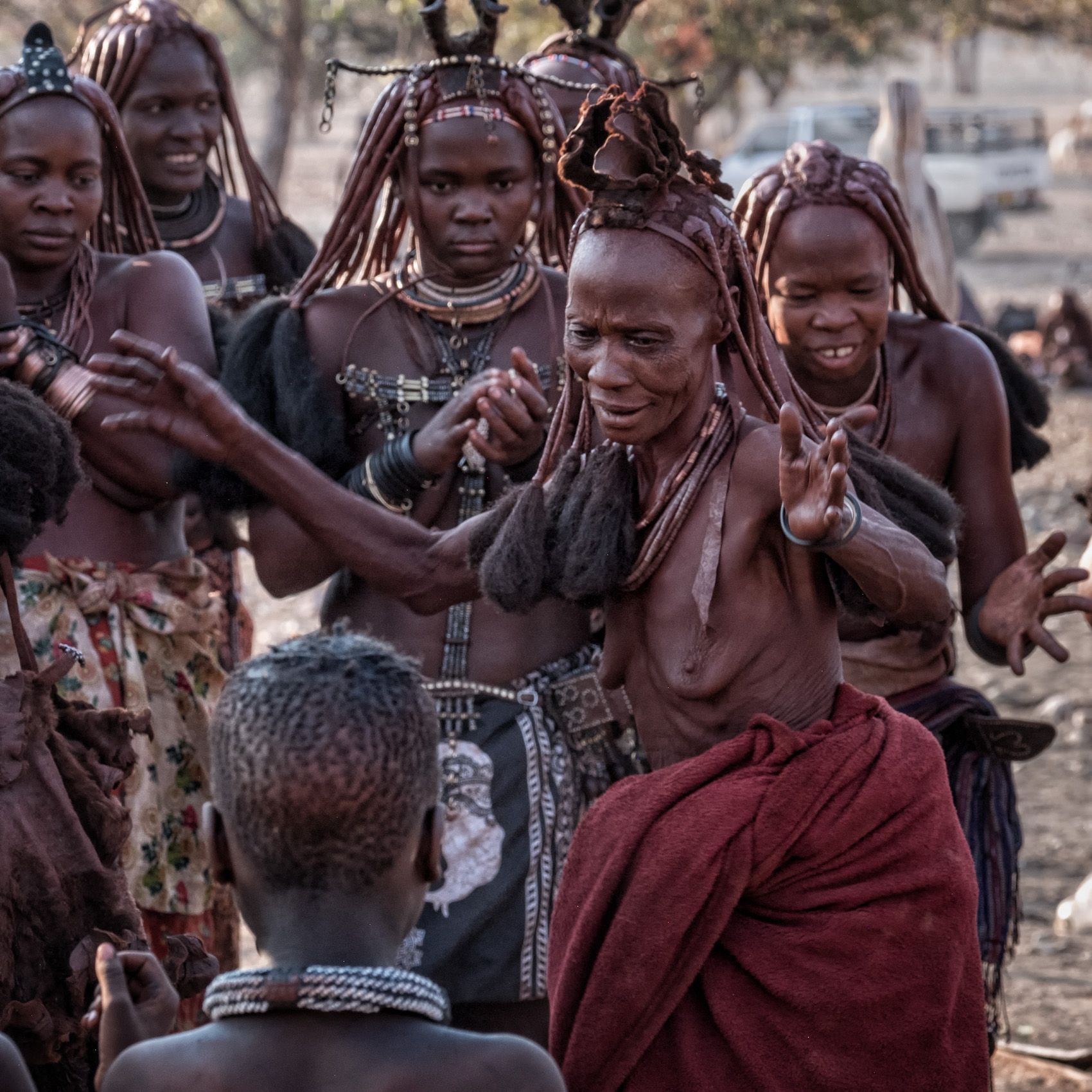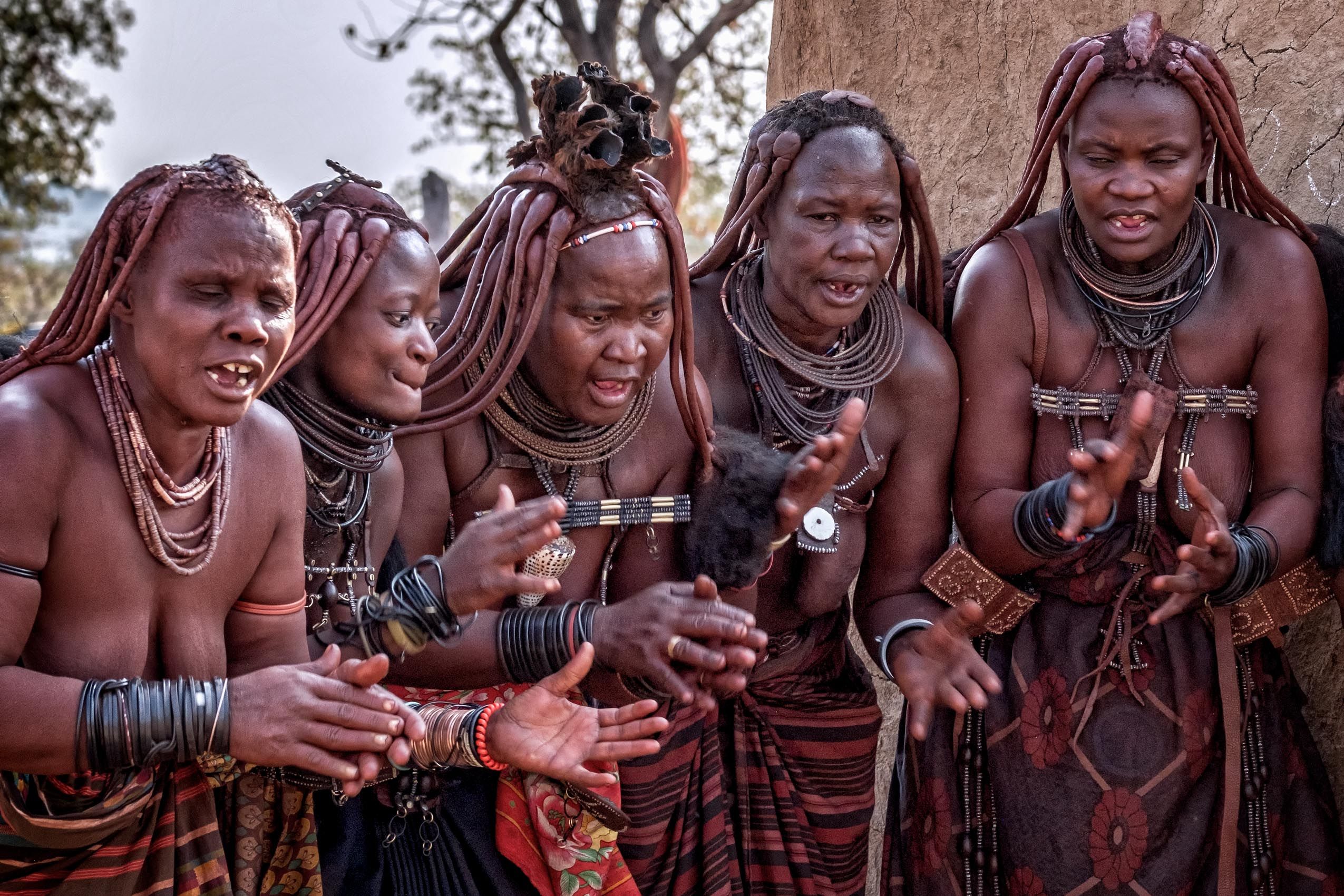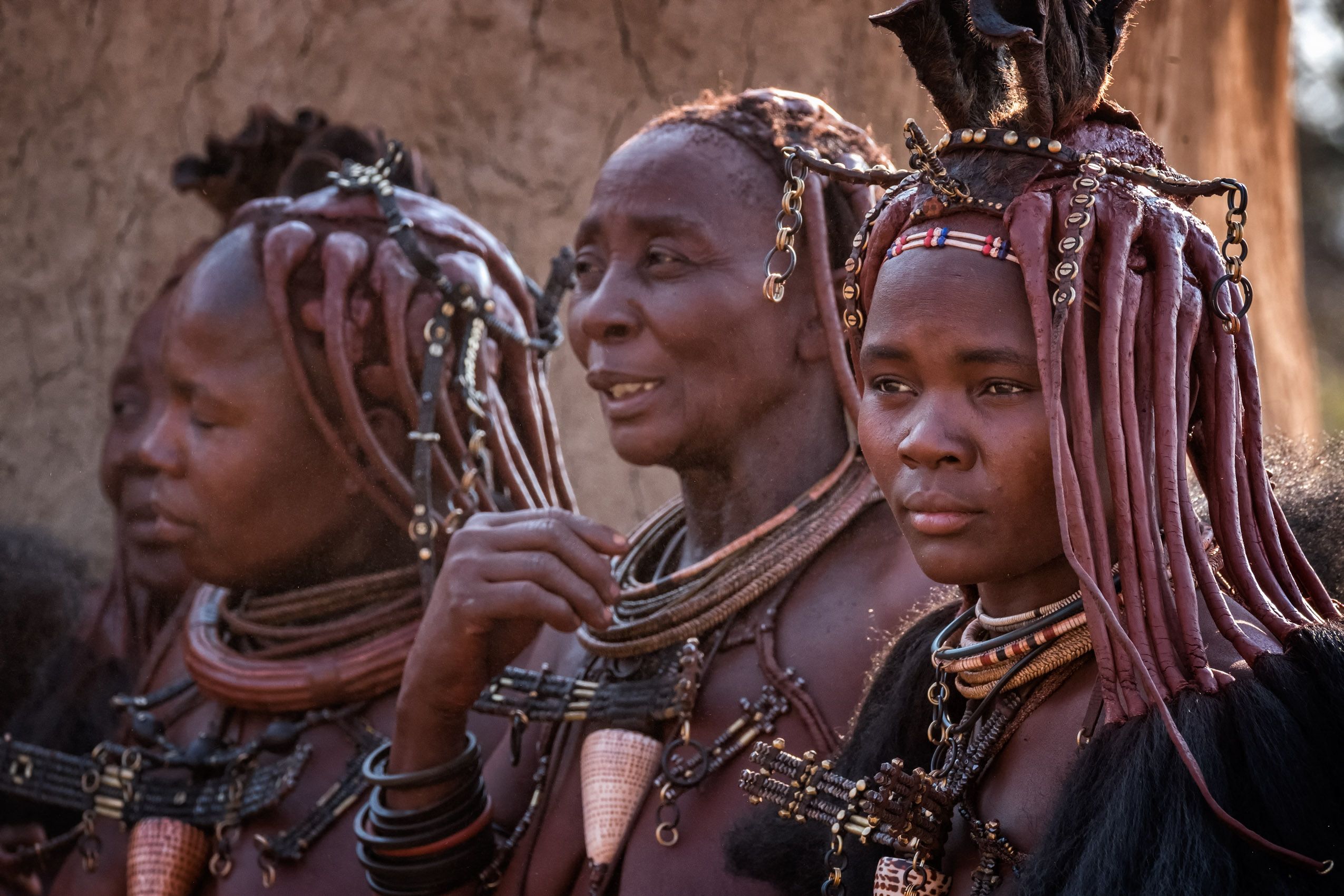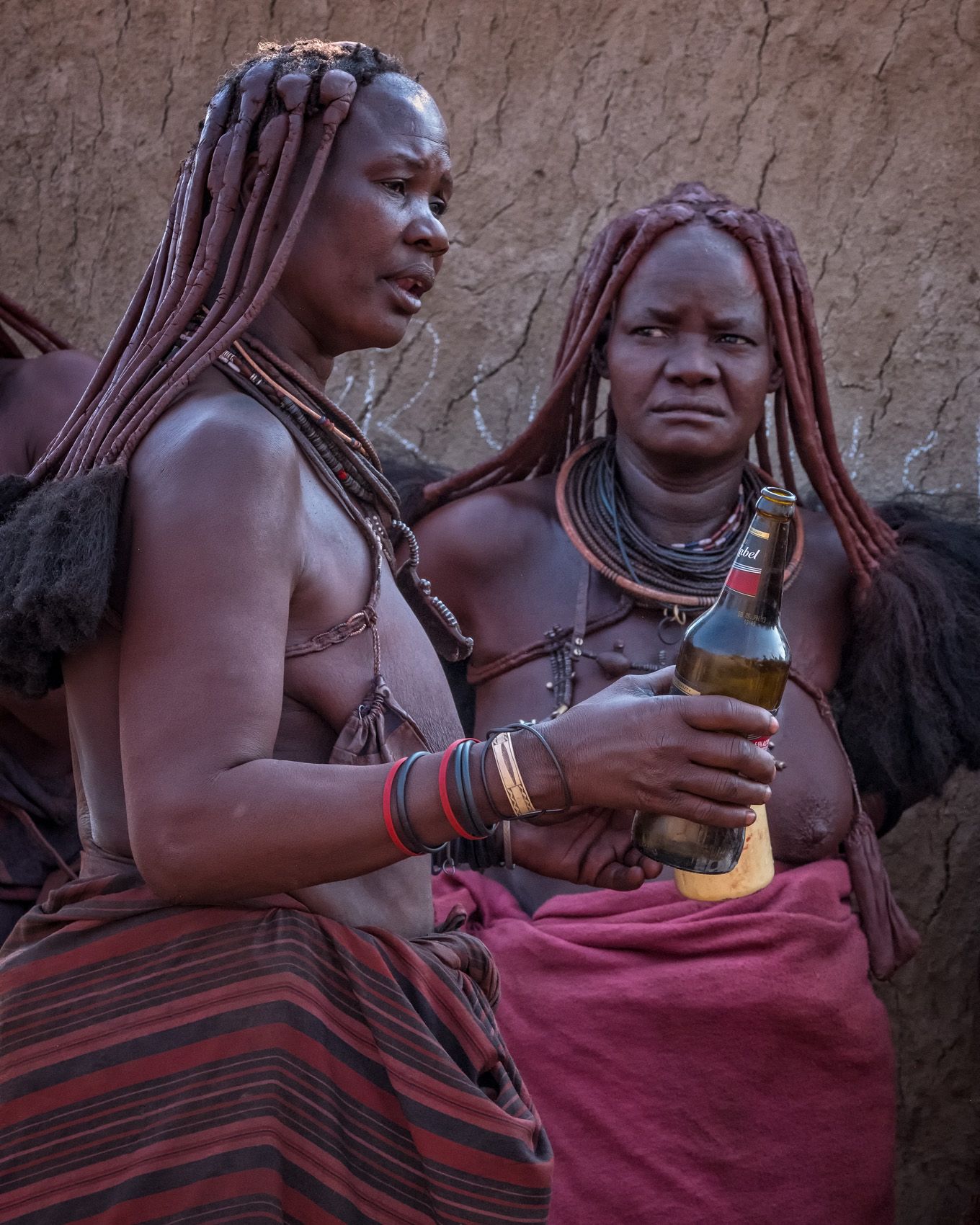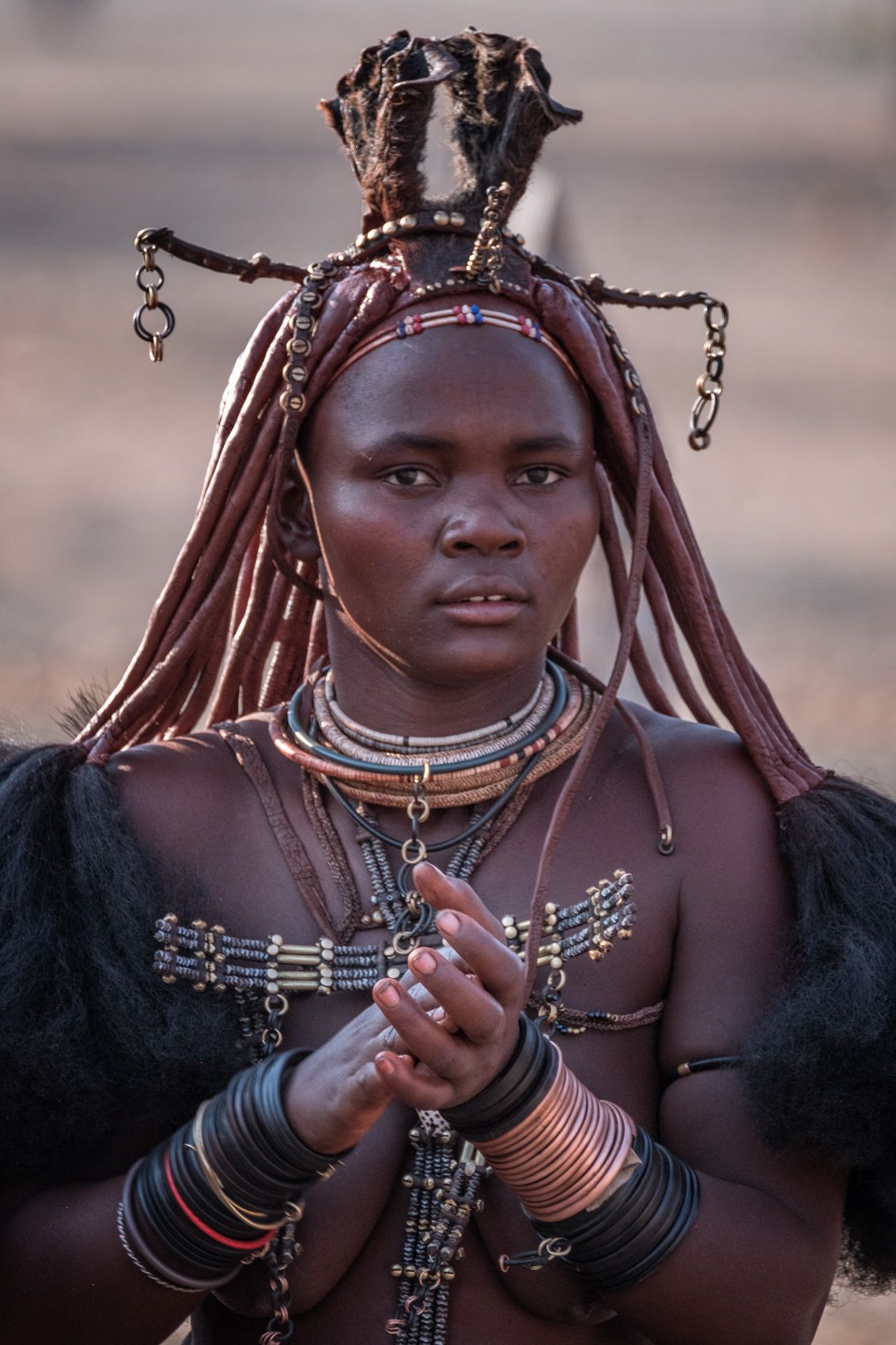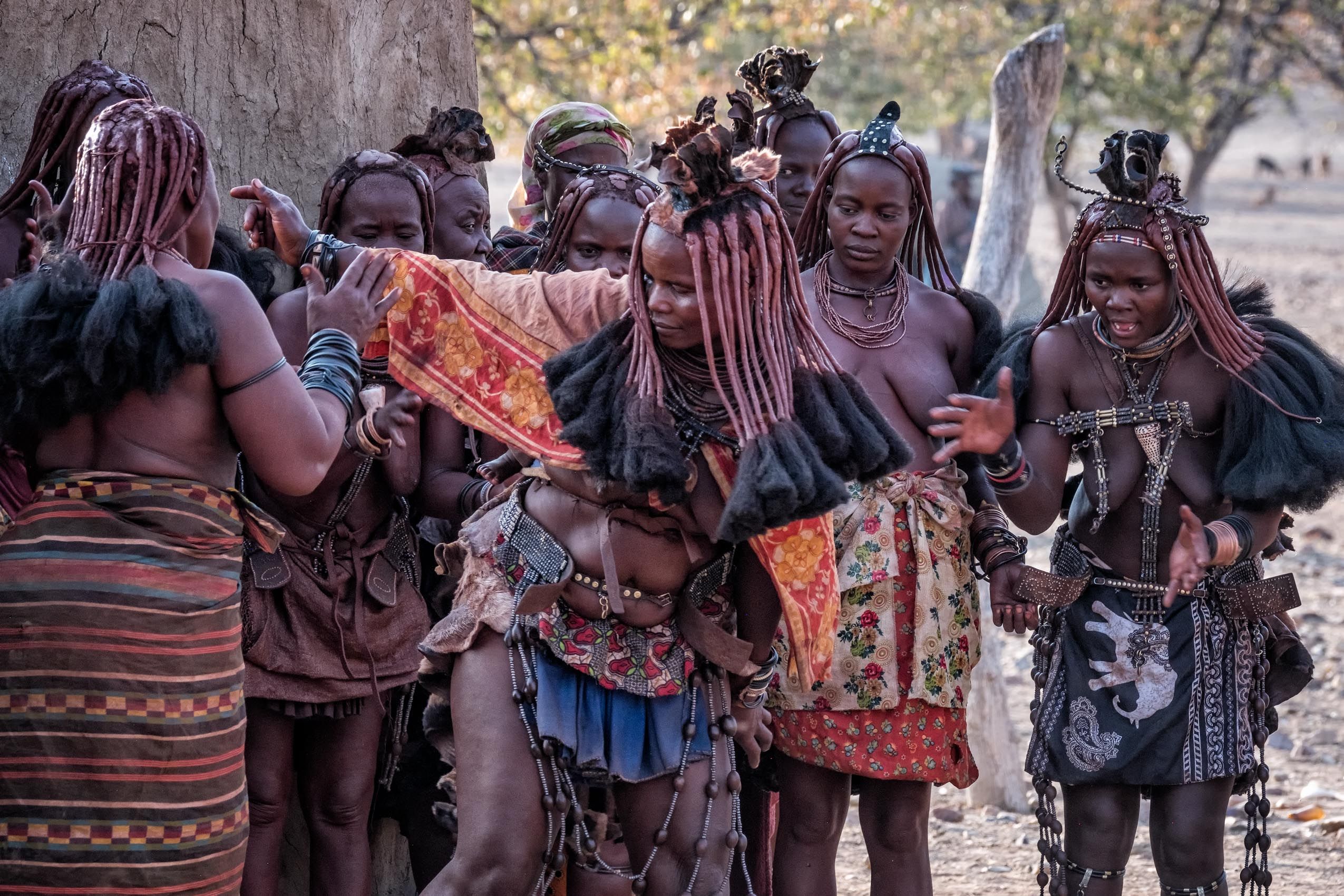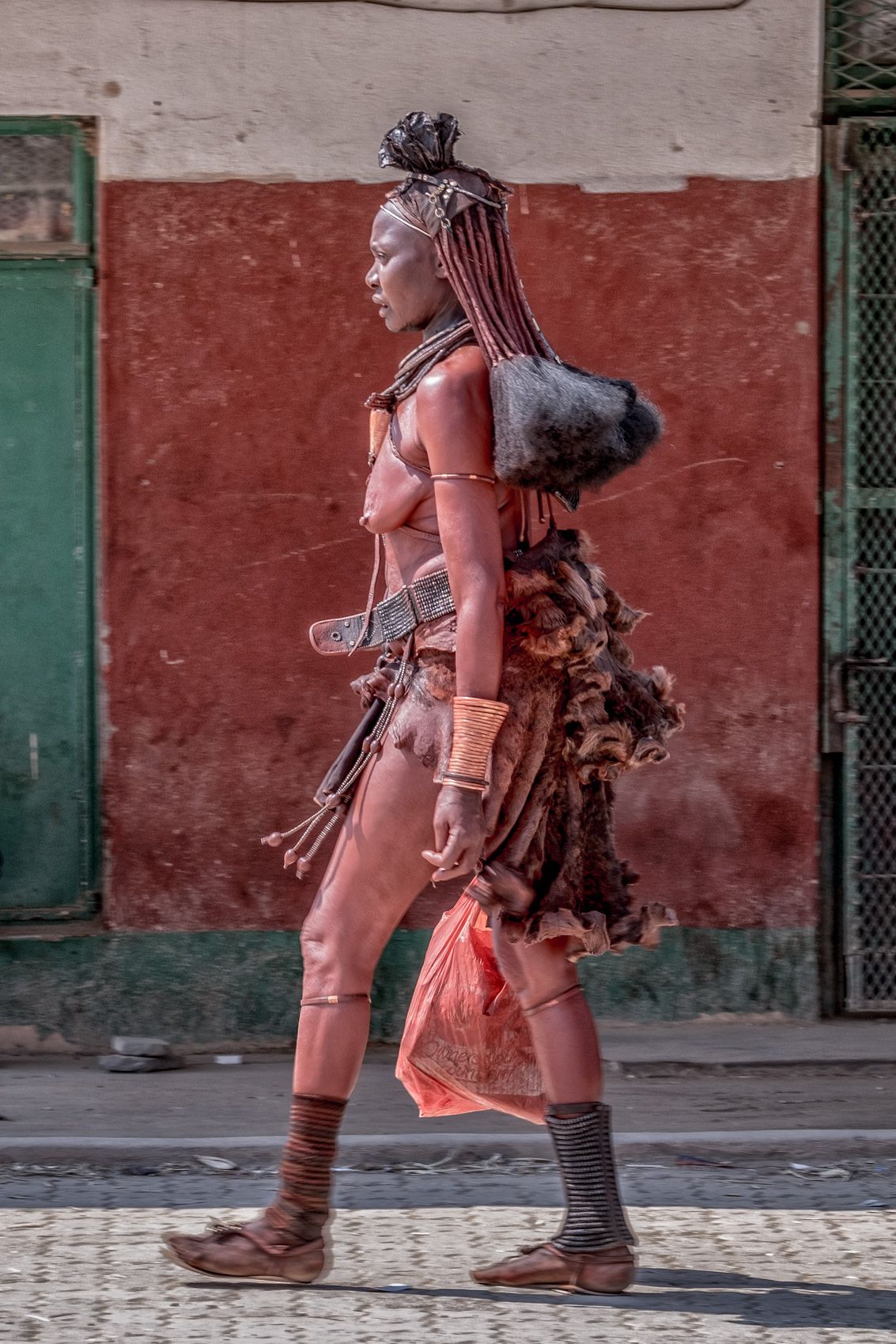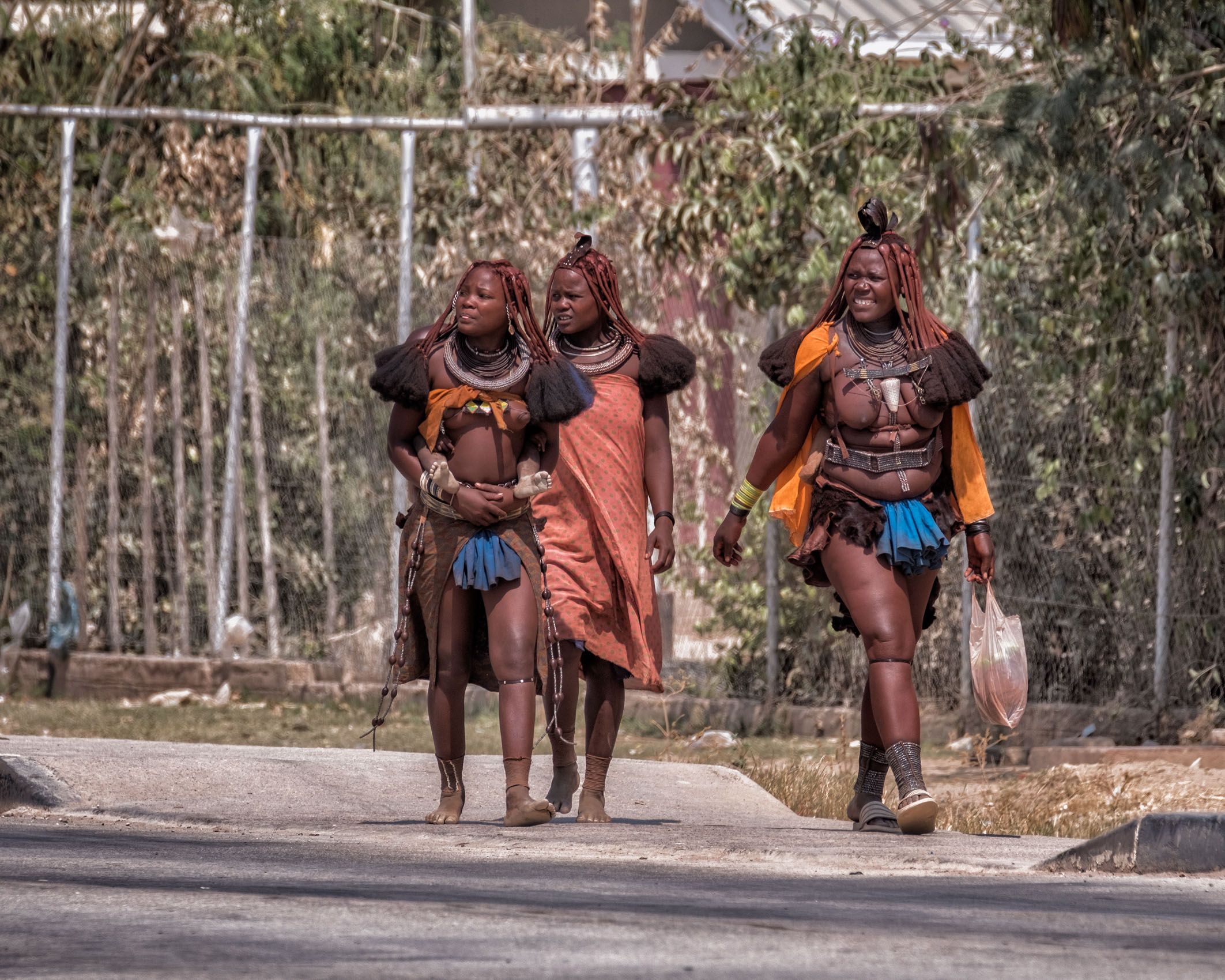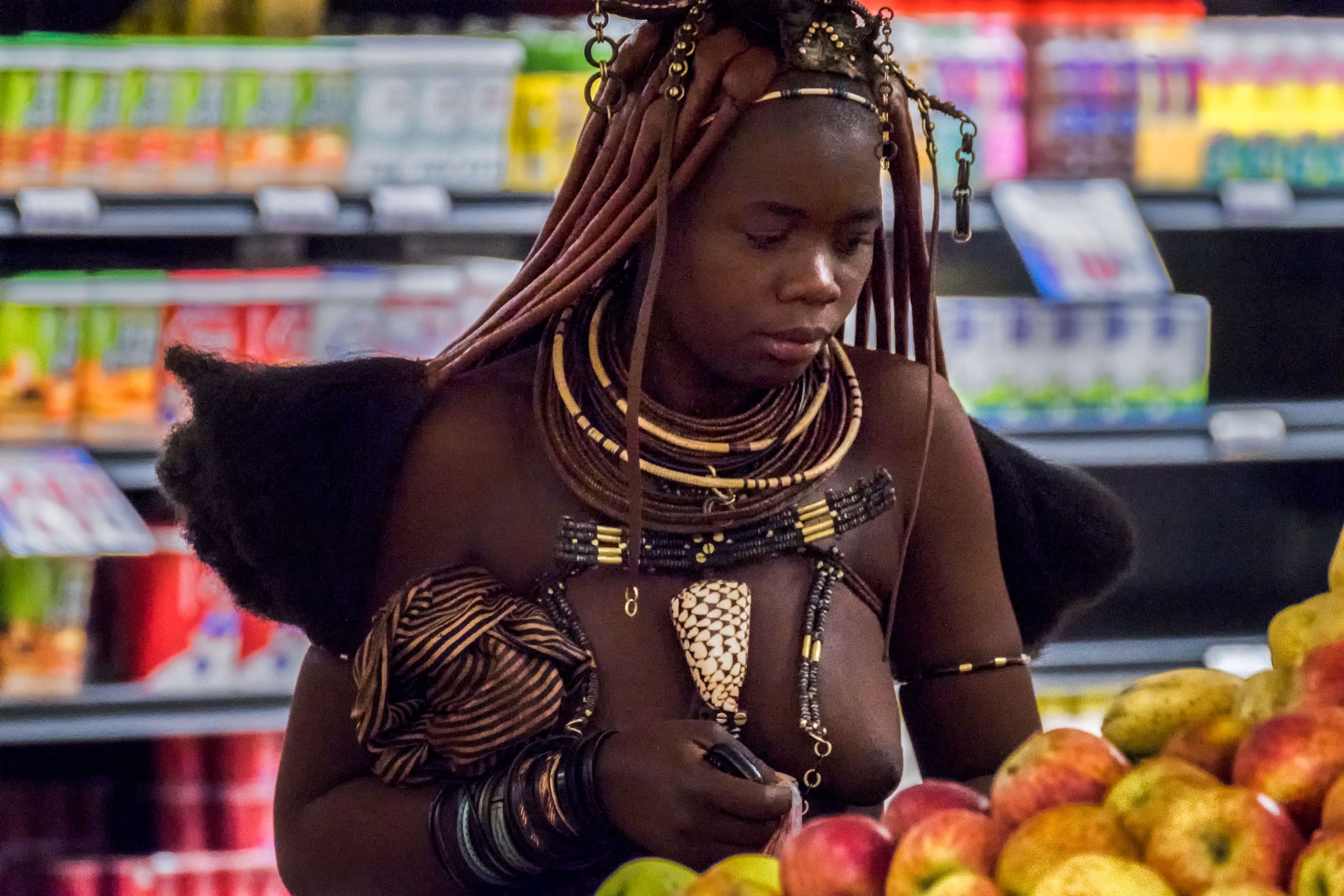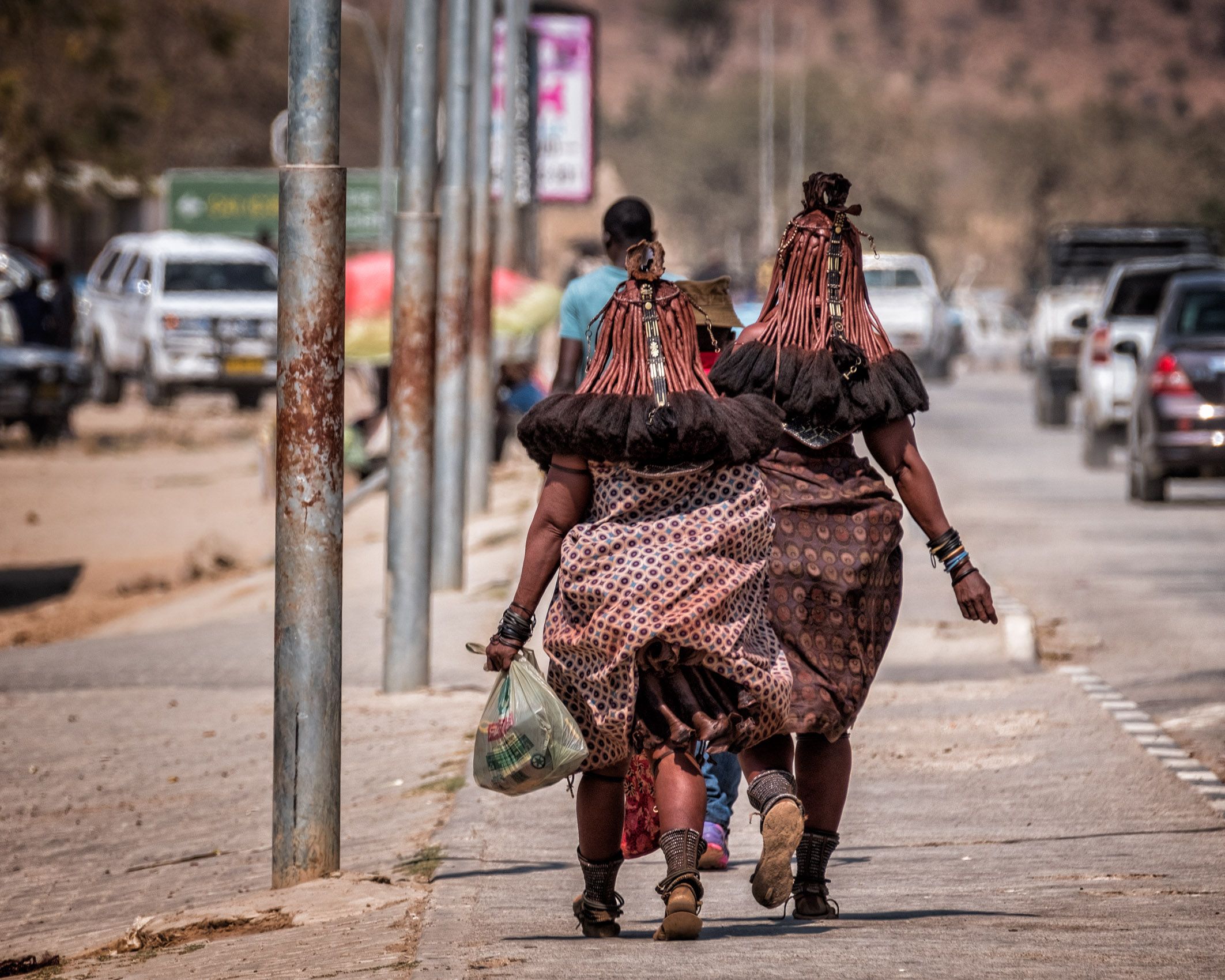NAMIBIA: The Himba People of Kaokoland
Because of their traditional dress and body adornment—and their semi-nudity—Himba women are by far the most photographed of all Namibians. Nevertheless, the Himba people constitute a tiny minority of Namibia’s population. They share a common ethnic and linguistic heritage with the much more populous Herero people of the Namibia-Botswana-Angola border area. The Himba live in a hot and arid region of northern Namibia traditionally called Kaokoland, now the administrative region of Kunene. They are polygamous semi-nomadic pastoralists living as extended families in small villages of huts surrounding a kraal where livestock are kept and the carefully attended okuruwo or sacred ancestral fire. Most adult males are absent much of the time herding their cattle, farming, or working at jobs outside of the traditional economy. The daily labor-intensive work of the village falls to women and girls, notably cooking, milking of cows and goats, childcare, provision of water and firewood, and the making of clothing, jewelry and crafts for sale to tourists. Himba women place a high value on personal grooming and adornment. A relatively recent unintended consequence has been to make them a primary focus of the gazes and lenses of increasing numbers of foreign tourists and travelers. With the benefit of a private vehicle and a Himba guide, I was able to visit villages deep in the bush, where people could be photographed without restriction, going about their daily activities rather than posing by the roadside or in made-for-tourists “cultural villages.” Similarly to the Hamer women of the Omo Valley in southern Ethiopia, Himba women rub their skin and their plaited hair with a cosmetic paste (called otjize) mixed from butterfat and ochre pigment. This works as a cleanser (in the absence of reliable water supplies), sunscreen and insect repellant; its burnished orange-red color and thick texture are associated with earth and blood. This cosmetic treatment is often complemented (as seen in the interior images here) by perfuming the hair and body with aromatic incense from local herbs and resins. Hairstyles and jewelry are significant markers of gender, age and social status within Himba society. For example, infants usually have shaved heads, young boys often have a braid extended backward and young girls two braids extended forward. Married women and mothers wear an elaborate headpiece shaped from leather called an erembe, crowning multiple braids of hair that are thick with otjize paste. Their success at preserving aspects of their traditional culture does not preclude the Himba from engaging with and to some degree assimilating aspects of the wider world. This is most strikingly on view in Opuwo, the regional capital and its largest town. Himba come here to shop, socialize and acquire healthcare. Here they interact with people from the many other ethnic groups of Namibia, including the few white Namibians and occasional foreign tourists—as well as the now inevitable Chinese merchants and traders who have come to Namibia as everywhere else on the planet to do business. In one of my images from Opuwo, at the end of the sequence, a bare-breasted and traditionally attired Himba woman grasps her cellphone in her hand as she shops for produce in an Opuwo supermarket: Standing next to her gave me, the western visitor, an apprehension of the how in their daily lives the ostensibly “traditional” Himba are continuously negotiatiating beween the local and the global.



















